Choice of Pattern
This method for transferring a mosaic design with contact paper works whether you are improvising on a quickly sketched cartoon or carefully following a detailed pattern for each piece of tile.
This method reverses the mosaic from left to right in a mirror effect because the tile is laid upside down onto the sticky pattern and then a backer board spread with glue is placed on top of the upside down tiles. If you have NUMBERS or LETTERS in your pattern, remember to reverse them in your pattern by turning the pattern over and tracing it from the other side in marker and using that as your pattern.
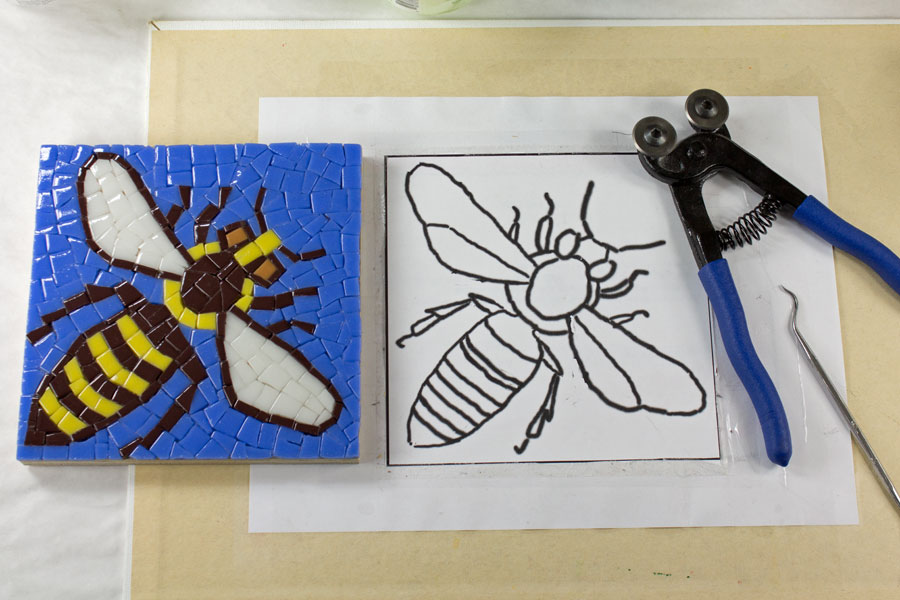
The pattern above was a quick sketch and not followed rigorously. Instead, I improvised details based on how I could cut the tile.
The Free Mosaic Patterns available at our tile and supplies store are drawn in terms of pieces that can be cut from 1/2-inch recycled glass tile and show each piece in the mosaic.
Tape Contact Paper Over Pattern
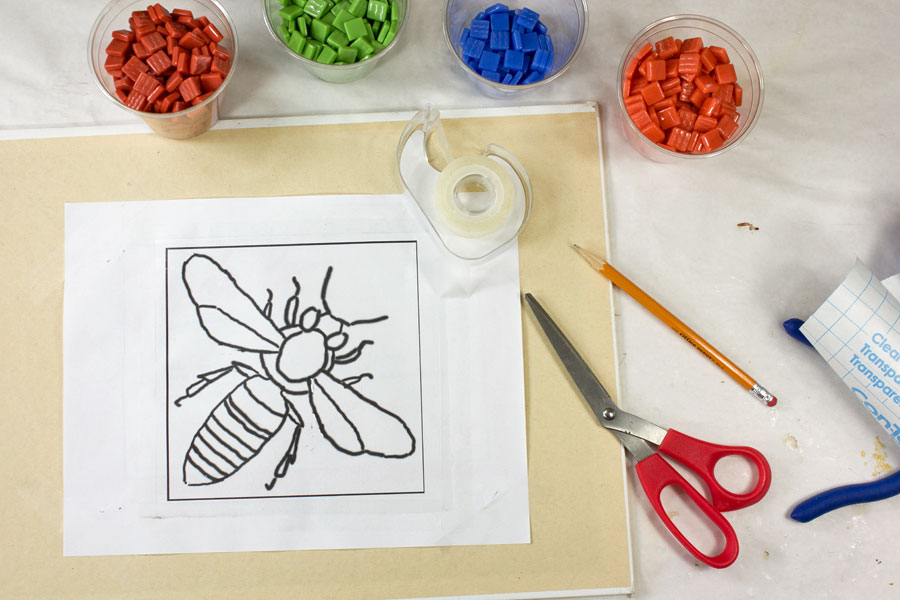
Make sure you tape the contact paper UPSIDE DOWN. The purpose of the contact paper is to keep the tile from moving around as you lay out the design.
Clear packing tape can be substituted for contact paper, but you may want to pat the tape with your hands several tiles to make it less sticky.
Lay Tile UPSIDE DOWN on the Sticky Pattern
The pattern is sticky because it has a piece of upside down contact paper taped over it. Lay pieces of tile face down onto the pattern so that the textured backsides are facing up. Later we will coat the backer in glue and lay it on these upside down tile.
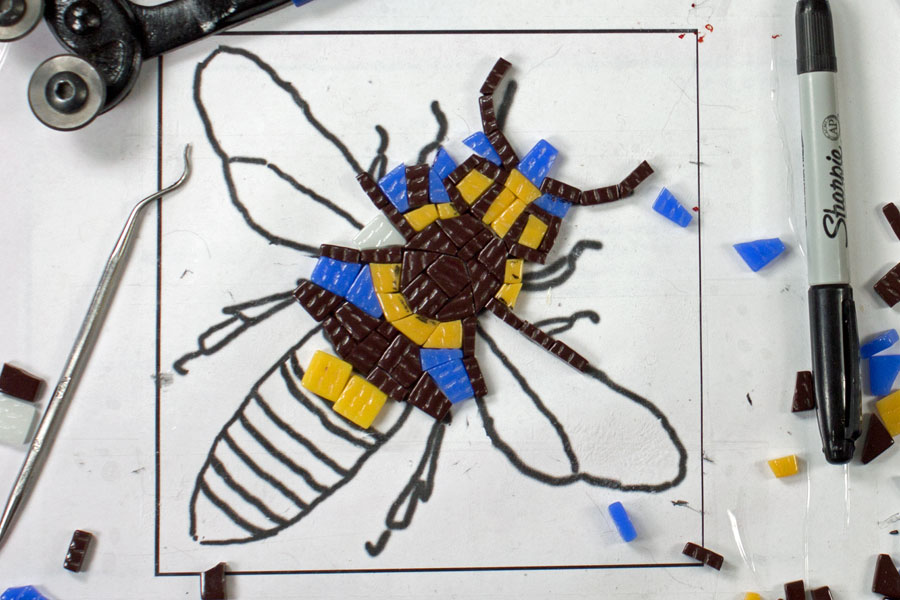
Work from the Center of Pattern
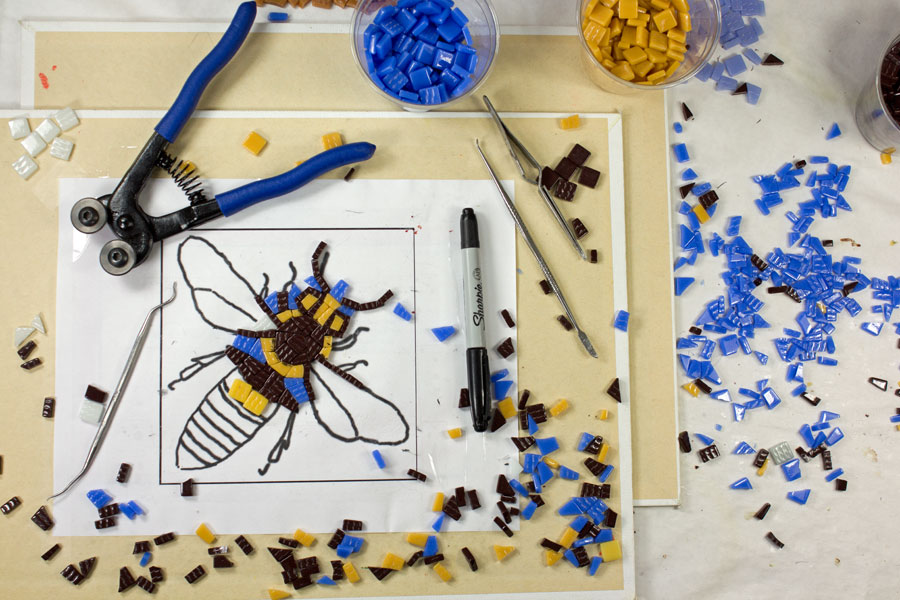
Begin cutting and laying tile near the center of your mosaic and work outward to avoid having to squeeze a piece between tiles that have already been laid, which can be frustrating and require more trimming.
Trim Less, Waste Less
Trimming tile to shave off just a little bit off is MUCH more difficult than cutting a piece into two parts . Trimming is difficult because tile will often crumble at the edge and not break as predictably or as cleanly as it would if you were cutting off a more substantial piece. That is why you want to avoid trimming as much as possible by doing the following:
- Cut a few alternate pieces and use the best instead of trimming.
- Remove small amounts by rubbing the piece on a marble file instead of trying to cut it off.
- Work from the center of the mosaic to avoid the need to trim.
- Tolerate less exact pieces and the grout gap these pieces create.
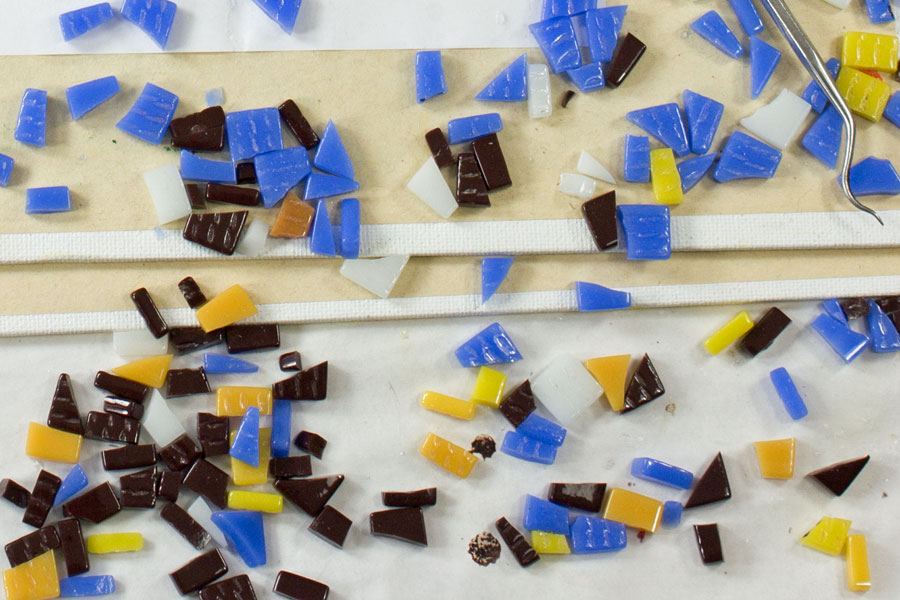
Change Tile Color If Needed
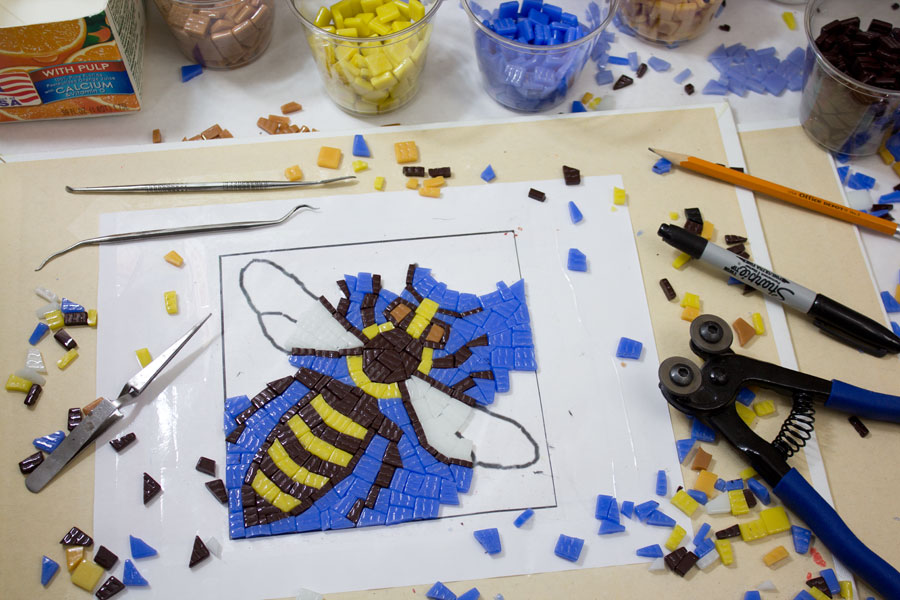
The contact paper holds tile in place while you arrange the tile, which allows you to fit pieces more closely and even replace a color if it doesn’t look right. A dental pick is useful for pulling up tile, but take care not to snag the contact paper or pattern. I dull my dental pick on concrete to prevent this.
Do Not Tile Beyond Borders
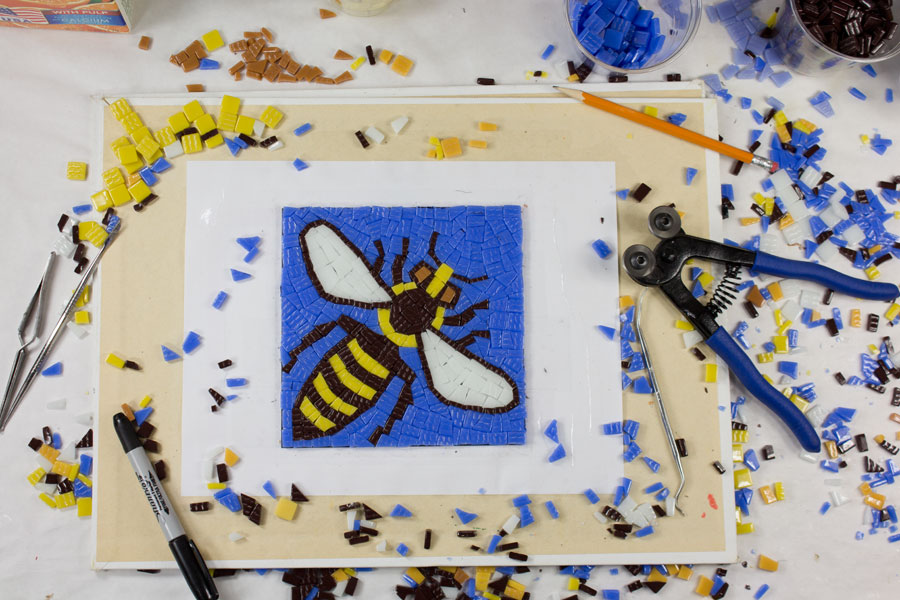
Do not lay tile beyond the outline of the border so that the mosaic fits on the backer. Make sure each tile is within the border by a hair or touches the border but does not extend beyond. If you have a few pieces that do, the finished mosaic can be filed with a marble file, but it is better to file or cut the pieces before gluing.
Seal Backer With PVA Glue
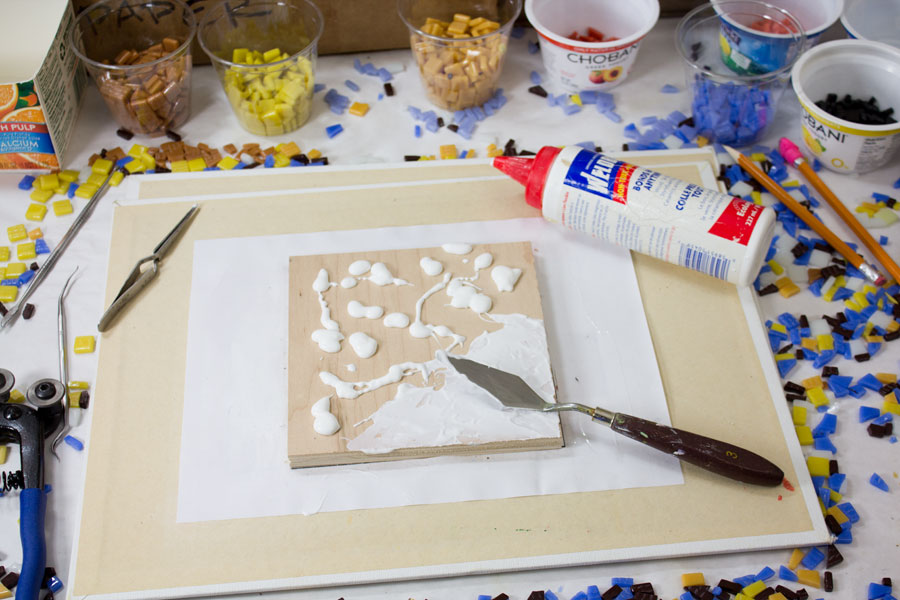
Plywood backers should be sealed with the same white PVA (polyvinyl acetate) adhesive that will be used to attach the tiles. This sealing coat should be applied and allowed to dry completely before proceeding.
We wouldn’t need to do this pre-sealing if we were gluing each tile individually with a generous blob, but we are going to glue on all the tiles at once in a layer spread thin, and we want to make sure that the second coat of glue that actually attaches the tile isn’t all sucked up by the plywood in places where it happens to be spread thinnest.
Spread Backer with 2nd Coat of Glue
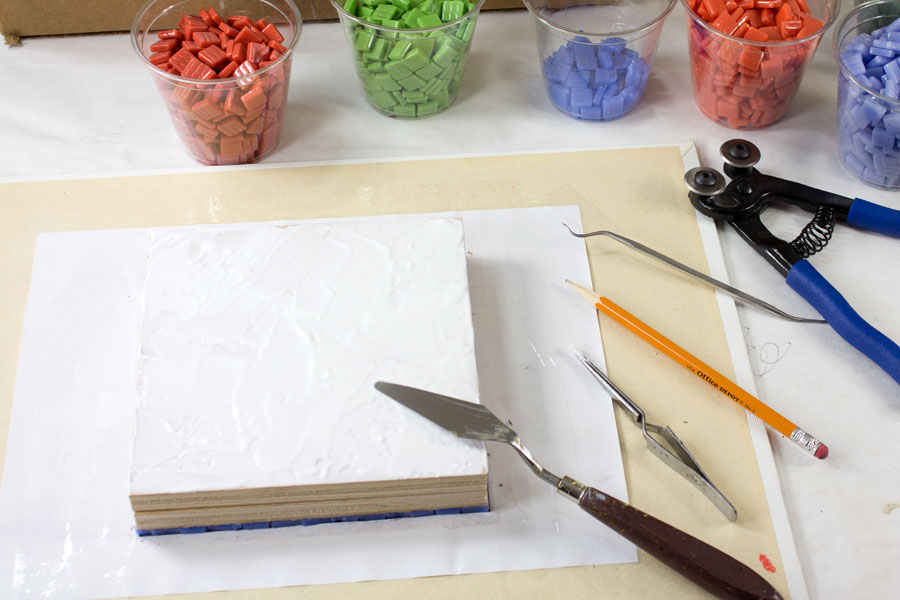
How thick should you apply the glue? Place a few test tiles and pull them up and look at them. Make sure the glue wets the bottom of the tile completely. The glue has to be that deep, but don’t over do it. Try to spread it thinly enough so that the glue doesn’t come up too high between tiles placed closely together.
Place Glue-Covered Backer on Mosaic
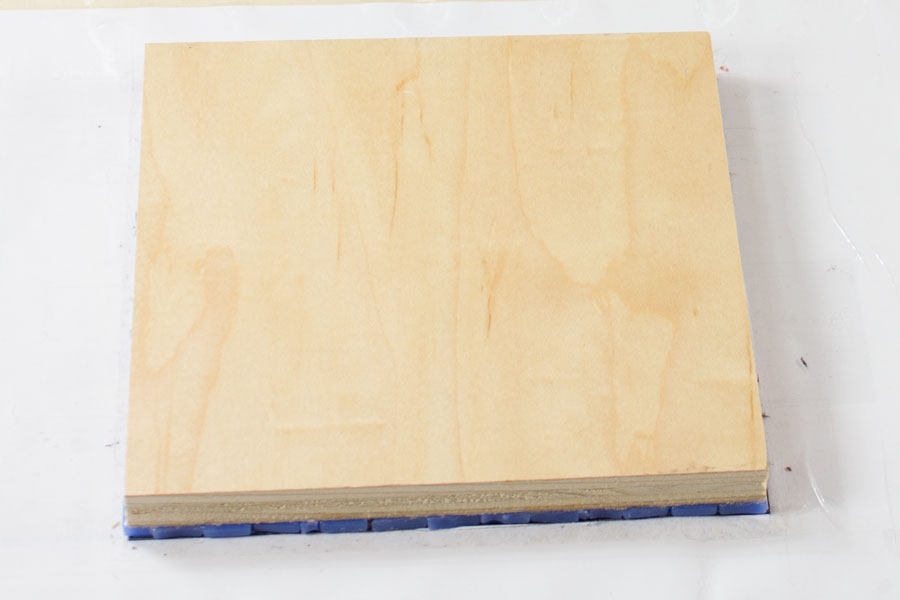
Center the backer on the mosaic before it is lowered down because it is difficult to move the backer from side to side without moving the tile. If you do need to push the backer to center it, hold a straight edge on the opposite side to keep the tile from moving.
Untape Contact Paper and Flip Mosaic
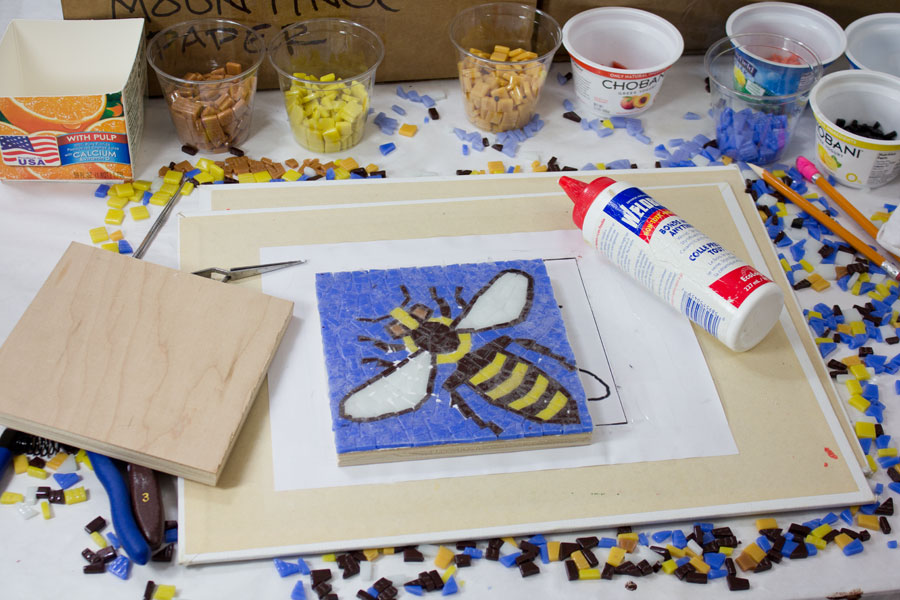
The contact paper is untaped from the work surface, and the mosaic is flipped upright so that the face of the mosaic is visible. Notice the occasional place where glue squeezed between the tile. This can be removed with a dental pick once the glue is thoroughly dry.
Remove Contact Paper
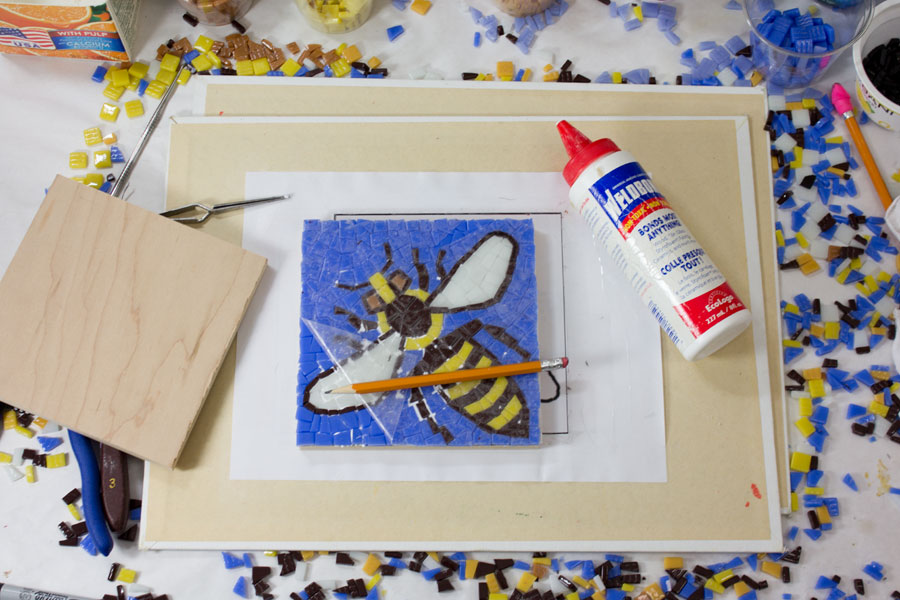
Allow the glue to dry before peeling off the contact paper. Also avoid cleaning the faces of the tiles or handing the mosaic until the glue under the tile is dry. If you bump one tile and it moves, other tiles are also moved, and they move again when you try to fix things. Tiles start sticking to the drying glue on you fingertips and pulling free from the backer. Don’t risk this. One touch can spiral into disaster.
Removing Glue Residue
After the glue dries and you remove the contact paper, you will notice places where the PVA glue got squeezed up between the tiles and filled the grout gap. There will probably be places where the glue smeared onto the faces of the tiles. The glue is clear when fully dry, but if it is misted with water, it will turn white and be more visible and softer and easier to remove.

We use a wide plastic pan with a wet terry washcloth spread on the bottom. We lay the mosaic face down on the wet cloth and allow the glue to turn white. We rub the mosaic on the cloth with a gentle even pressure making sure that not water squeezes out of the washcloth and between the tile. The washcloth should be thoroughly wet but rung out so that it does not drip or squeeze out water when pressed.
Of course, I am talking about a washcloth that has been retired and no longer rubbed on people’s faces. Glass slivers can nest in knitted fabrics and outlast the washer and dryer.
Keep an eye on the glue that is holding the tile to the board (by looking at the side of the mosaic and in gaps and make sure that the glue there does NOT get wet and start whitening. Stop working and dry the mosaic and leave it to dry if you see that happening.
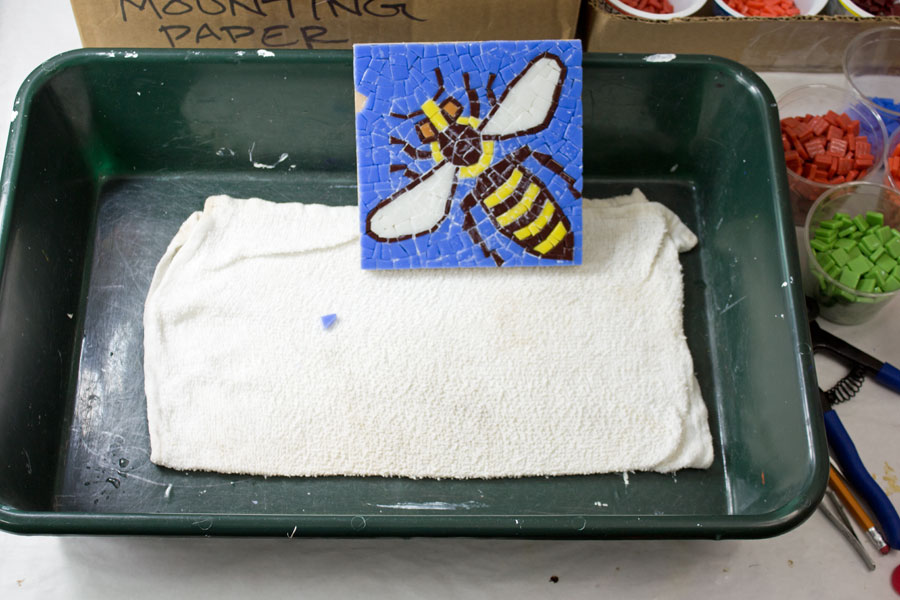
If a few tiles pop free, they can be reglued after the mosaic is cleaned up. A dental pick is used to clean glue residue from between the tiles. Take care not to pry with the dental pick because you can crack and splinter the glass tile very easily by prying with small tools.
Mosaic Ready For Grouting
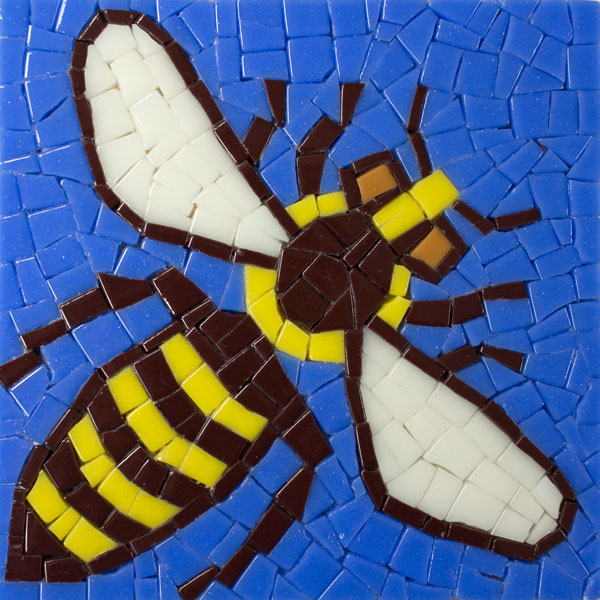

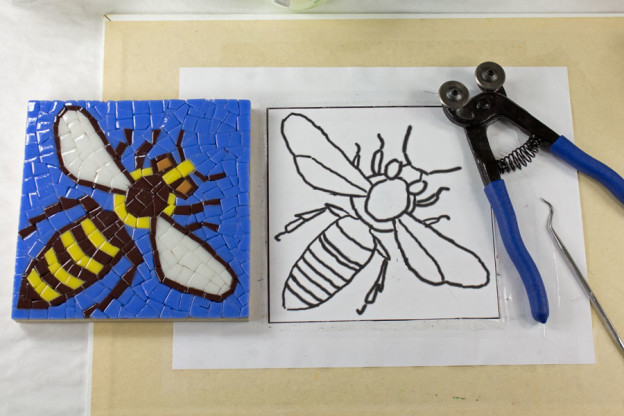
Leave a Reply